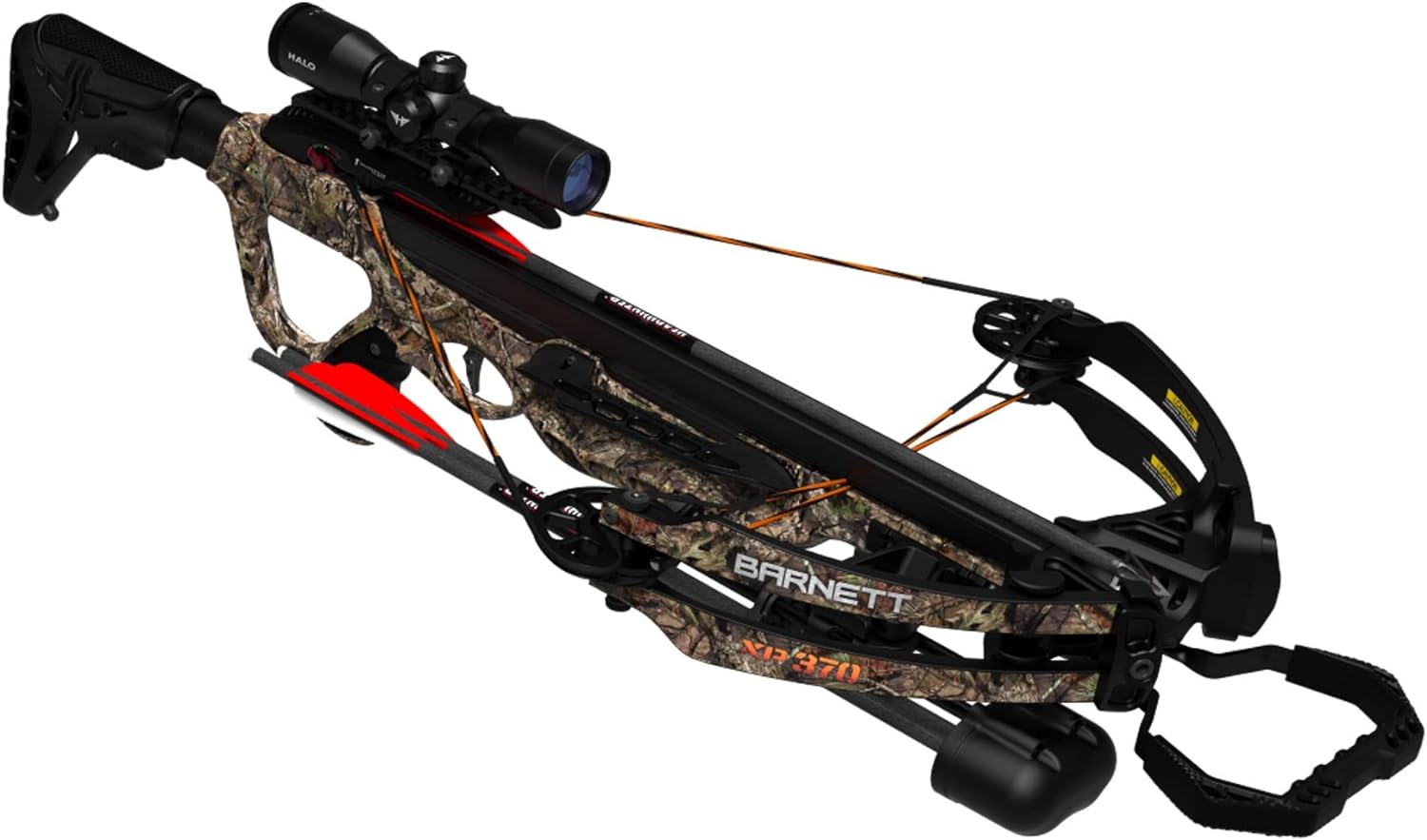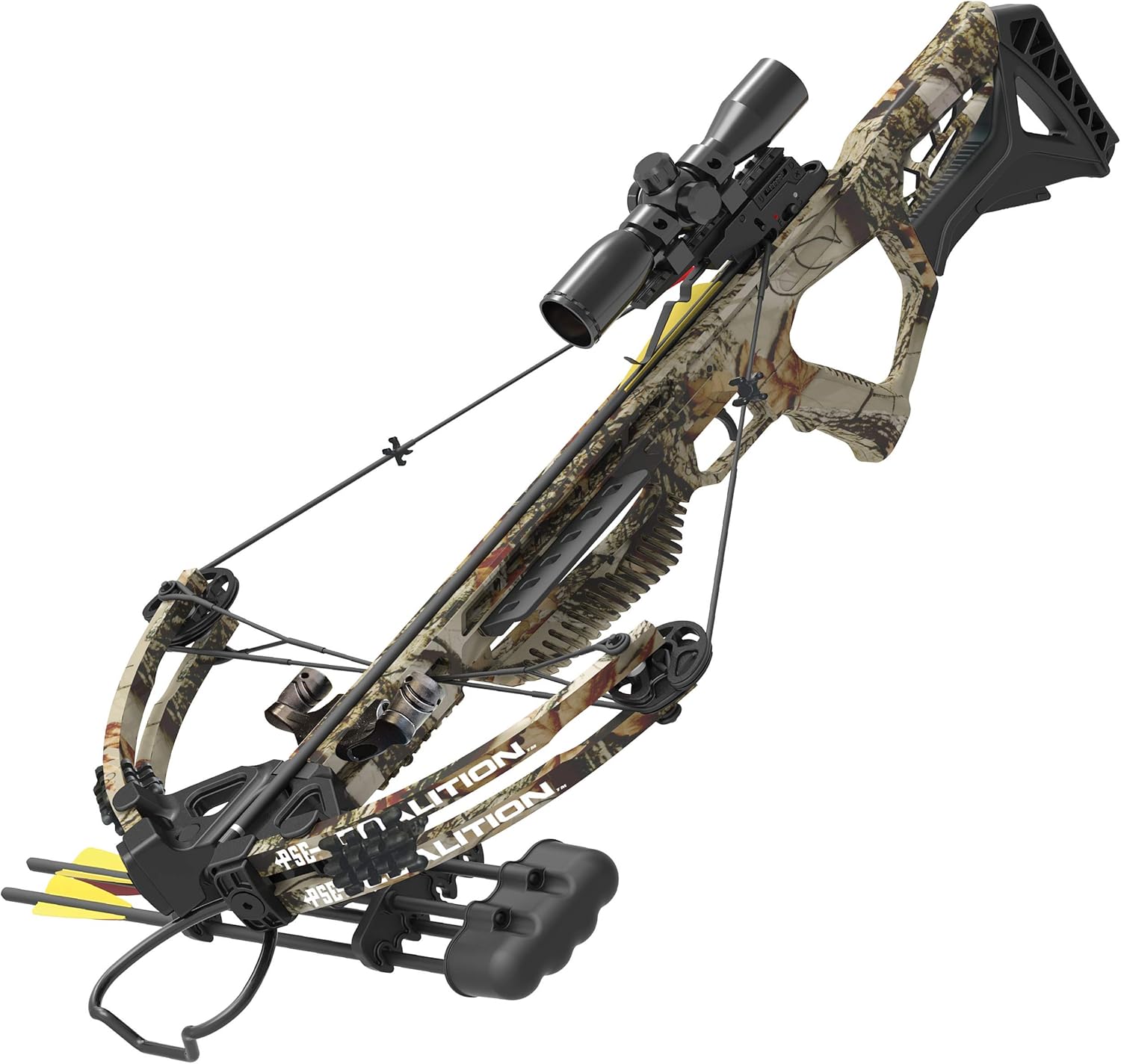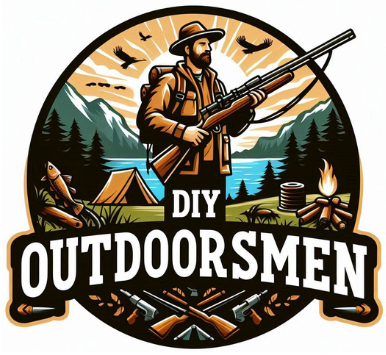Contents
- 1 Key Equipment for Beginner Crossbow Hunters
- 2 Getting Started With Your First Crossbow
- 3 Essential Safety Fundamentals
- 4 Step by Step Beginner’s Guide for Crossbow Hunting Success
- 5 Challenges and Considerations Before Heading Out Crossbow Hunting
- 6 Advanced Tips and Practice Drills for Crossbow Hunting
- 7 The Basics: What Equipment Should Beginners Prioritize for Crossbow Hunting?
- 8 Frequently Asked Questions on Crossbow Hunting
- 9 Wrapping Up with Crossbow Hunting for Beginners
Crossbow hunting offers a unique and rewarding entry point into the world of archery and big game pursuits. Many beginners are drawn to crossbow hunting because of its simplicity and powerful results, especially for those who appreciate a quieter and more focused style of outdoor recreation.
QUICK LOOK:
- Select an Entry Level Crossbow: Pick a model that feels good in your hands, with manageable draw weight and a clear, easy-to-use safety mechanism.
- Practice Cocking and Loading: Get comfortable with using the cocking device and loading bolts. Don’t rush this; it’s where most early mistakes happen.
- Set Up a Practice Target: Use a crossbow-rated target and practice shooting at 10 to 20 yards first. Accuracy is closely tied to good habits built up at close range.
- Understand Ethical Hunting Range: Most crossbow hunters keep shots under 40 to 50 yards. This helps ensure clean, quick harvests and avoids wounding animals.
- Try Different Positions: Practice from sitting, standing, and using shooting sticks or from a blind, since real-world conditions will rarely be perfect.
- Test Arrows and Broadheads: When switching to broadheads for hunting, sight in the crossbow again, since the flight may differ from practice tips. Double-check your point of impact at your expected hunting distances.
Learning the ropes means starting with the essentials, right from safety to choosing the right gear and practicing with discipline. In this guide, I’ll walk through everything I think you’ll need to know before heading into the woods with your crossbow for the first time.
Key Equipment for Beginner Crossbow Hunters
Getting started with crossbow hunting begins with understanding the types of gear needed, how they work, and why they matter. Crossbows today come packed with features, but some basics will matter more for a new hunter than the bells and whistles. Picking the right setup not only helps with your comfort and accuracy but also makes the entire experience much more enjoyable and less stressful.
Modern crossbows have gone through a significant glow-up, making them safer, lighter, and more dependable than ever. They are not just reserved for seasoned hunters; many states have eased hunting regulations, opening up opportunities for anyone interested in this method.
Crossbows also appeal to those who want to keep hunting while recovering from injuries or who may not have the strength for traditional bows. Whether you’re interested in whitetail deer or smaller game, there’s a crossbow and accessory list that fits your needs. Plus, crossbows are a great way for younger or older hunters to get involved, thanks to their user-friendly design and forgiving mechanics.
Getting Started With Your First Crossbow
Before heading afield, getting familiar with your crossbow setup is important. You don’t have to buy the most expensive one on the market, but choosing a reliable and easy-to-use model makes learning a whole lot smoother. When checking out options at outdoor shops or online, don’t hesitate to ask questions about how a model fits your frame and strength.
There are three main types of crossbows to know about:
- Recurve Crossbow: Simple in design, fewer moving parts, easier to maintain, but generally wider and longer.
- Compound Crossbow: Utilizes a cam system to increase power while reducing limb width, making it more compact and easier to handle in the field.
- Reverse Draw Crossbow: Draws the string backward, giving a more balanced design and usually quieter operation.
Pay attention to the draw weight and overall weight of the crossbow. Most states require a minimum draw weight (often 75 to 125 pounds) for legal hunting. For those just beginning, starting at the lower end and working up helps build confidence and strength. Always match your arrows (also called bolts) to the crossbow’s specifications. Using the correct length, weight, and spine keeps things safe and accurate.
Accessories are another area where beginners are often tempted to overspend or overlook something vital. Invest in a comfortable sling, a decent case for transport, and a scope that’s easy for you to sight in. Over time, you’ll figure out what extra gadgets help and which ones you can skip.
Essential Safety Fundamentals
Safety can’t be overlooked with crossbows. A few habits are foundational for anyone, but especially for new users who might not be familiar with the specific risks involved.
- Read the Manual: I always read the user manual thoroughly to learn about each control, safety feature, and the recommended use practices. A quick run through your manual can track down hidden features or maintenance advice unique to your crossbow’s model.
- Finger and Thumb Safety: It’s super important to never let fingers or thumbs rise above the rail, because the string travels forward at very high speeds and can cause serious injury. Always keep fingers well below the string path during use.
- Avoid Dry Firing: Never, under any circumstances, shoot a crossbow without a loaded arrow. Doing this can damage the bow and even injure yourself or others nearby.
- Safe Cocking: Using a rope cocker or integrated crank makes cocking safer and easier, reducing risk and providing more consistency.
- Proper Storage: Keep your crossbow unloaded until you’re ready to shoot, and never stalk game with the crossbow cocked and loaded. Store it in a cool, dry spot, uncocked, and out of reach of kids.
Consistent safety habits mean more confidence when you’re on a hunt, and that frees up your mind for enjoying the experience. Picking up small routines like inspecting bolts and checking limb tips can keep you safe and prevent costly repairs later on.
Step by Step Beginner’s Guide for Crossbow Hunting Success
Starting on the right foot means following a simple plan. Here’s my recommended order of steps for getting started:
- Select an Entry Level Crossbow: Pick a model that feels good in your hands, with manageable draw weight and a clear, easy-to-use safety mechanism.
- Practice Cocking and Loading: Get comfortable with using the cocking device and loading bolts. Don’t rush this; it’s where most early mistakes happen.
- Set Up a Practice Target: Use a crossbow-rated target and practice shooting at 10 to 20 yards first. Accuracy is closely tied to good habits built up at close range.
- Understand Ethical Hunting Range: Most crossbow hunters keep shots under 40 to 50 yards. This helps ensure clean, quick harvests and avoids wounding animals.
- Try Different Positions: Practice from sitting, standing, and using shooting sticks or from a blind, since real-world conditions will rarely be perfect.
- Test Arrows and Broadheads: When switching to broadheads for hunting, sight in the crossbow again, since the flight may differ from practice tips. Double-check your point of impact at your expected hunting distances.
Consistent, thoughtful practice is the single most effective way I’ve found to become comfortable and ethical as a crossbow hunter. Don’t forget to keep a shooting log or diary; it helps you spot patterns and track progress as you improve.
Challenges and Considerations Before Heading Out Crossbow Hunting
Like any new skill, crossbow hunting comes with a few hurdles. Being prepared for these can help make your early experiences better.
- Crossbow Weight and Size: Some crossbows are heavier or bulkier and can cause fatigue, especially during longer hunts. I look for models that feel comfortable for multiple hours. Consider ergonomic stocks and compact designs if you plan to move around a lot.
- Arrow/Bolt Selection: Always double-check that your bolts match the manufacturer’s recommended size and weight. Mixing brands or spec sizes can cause erratic shots and even damage equipment.
- Noise and String Vibration: Heavier or cheaper crossbows sometimes make more noise. Adding string dampeners can help with stealth when it matters most and can add confidence if you’re hunting wary game.
- Weather Sensitivity: Crossbow performance can be affected by rain, cold, or extreme heat. I always check the forecast and bring the right protective cases or string wax. Humidity and mud can make travel challenging, so pack accordingly.
- Regulations: Crossbow hunting rules vary by state and country. Take time to review local game regulations online, including hunting seasons, legal draw weights, and safety rules. Licensing requirements may change from year to year, so check in with the local wildlife office if you’re unsure.
Choosing the Right Crossbow for Your First Hunt
Looking at many options on the market inspired me to create a short list of models that are popular with beginners. Here are some that are known for their reliability and user-friendly features:

Barnett Explorer XP Crossbow
Compound crossbow with hunting accessory package. Explorer XP370 features an anti-vibration foot stirrup, an adjustable butt stock, and reaches high speeds of 370 feet per second.

TenPoint Titan 400 Compact Crossbow
With ACUdraw Silent it’s the easiest to operate, providing silent cocking & reducing the draw weight to 5 lbs, and it’s fully integrated into the crossbow.

RAVIN R26X Crossbow
At just 6.5 lbs and 5.75” axle-to-axle when cocked, the R26X is perfect for tight blinds, tree stands, or mobile hunts. Its slim frame offers agility without sacrificing performance.

PSE ARCHERY Coalition Crossbow
The Coalition is a fast, compact, and ergonomic crossbow featuring the comfort of an adjustable stock and a pass-through foregrip. Provides ultimate safety with complete power & control!
All of these models come with instructions and safety features designed for newer hunters, making them well worth considering for your first purchase. Consider trying them out in a store or reading several hands-on reviews before locking in your decision.
Advanced Tips and Practice Drills for Crossbow Hunting
Once I became comfortable with the basics, a few additional drills and habits made a difference in my consistency and hunting success.
Practice in Low Light: Since many game animals move at dusk and dawn, I started practicing shots in dim light using my hunting scope. This helps build confidence for real hunting conditions and helps you spot targets when visibility is limited.
Shot Placement Drills: Print or purchase deer silhouette targets and focus on the heart and lung area. Ethical shot placement is really important for humane harvests. Sticking to the vital zone is always better than pushing your range on risky shots.
Use Broadheads in Practice: Broadheads can fly differently than field points. I use my expendable broadheads on a few practice shots before hunting to make sure my aim stays true.
Establishing a routine, such as checking bolts for damage and inspecting strings for fraying, helps prevent accidents in the field. These habits become second nature and are invaluable during the pressure of real hunts. Don’t forget to wipe down and wax your string after a wet hunt—it extends the life of your gear.
Peer support makes a difference, too. If possible, jump into a local archery club or find an experienced crossbow hunter to give you a few pointers. Watching others in action helps cement safe and effective habits much faster.
The Basics: What Equipment Should Beginners Prioritize for Crossbow Hunting?
For those just getting started, investing in the essentials will make your learning process smoother and more enjoyable. A few must-have items include:
- Quality Entry Level Crossbow: Easy to operate and equipped with safety features.
- Crossbow Specific Arrows: Made to match your crossbow’s requirements for safe and effective shooting.
- A Reliable Scope: A mounted scope with clear optics helps dial in accuracy, even for beginners.
- Soft Case and Protective Gear: Useful for transporting and protecting your gear. Some hunters will add a compact field tool kit or portable string wax to their bag of essentials.
- Rope Cocking Device: Reduces the draw weight needed and keeps things consistent and safe when cocking your crossbow.
Real-life situations call for practical setups. My early crossbow hunts went smoother when I packed a field repair kit, extra arrows, and broadhead wrenches, since things can go wrong at the least convenient times. If you plan to hunt alone, sharing your location and expected return time lets your friends and family know you’re safe.
Another must for beginners is a good pair of boots. You’ll spend plenty of time on your feet, so invest in something waterproof and sturdy. Some hunters say comfortable boots are just as important as quality archery equipment, especially during those long, early mornings in the wilderness.
Frequently Asked Questions on Crossbow Hunting
These are some of the more common questions I hear from new crossbow hunters:
Can I hunt big game with an entry-level crossbow?
Yes, many entry-level crossbows are capable of taking down deer and similar game. Make sure your model meets the legal requirements for draw weight and arrow energy.
How often should I wax my crossbow’s string?
Waxing the string every 50 to 100 shots or when it feels dry will keep it operating safely and help avoid early wear.
How far can I shoot accurately with a beginner crossbow?
Most newcomers find that confident and ethical shots fall within 30 to 40 yards, though some may stretch to 50 with consistent practice. Remember to keep your hunting shots within your true comfort zone.
Wrapping Up with Crossbow Hunting for Beginners
Choosing the right equipment and learning safe habits makes crossbow hunting enjoyable and accessible, even if you’re brand new. Success comes with time, practice, and a willingness to keep learning each season. Stay curious, ask questions, and never stop working on your skills. Happy hunting!
As always, stay safe, enjoy the journey, and please try to leave it cleaner than you found it. If you have any comments, questions, ideas, or suggestions, please leave them in the comment section below, and I’ll get back to you ASAP. You can follow us on YouTube: Man Art Creations for videos of our DIY Adventures.
Most Recent Articles:
- 14 Tips And Tactics For Public Land Mule Deer Hunting

- 6 Features of Waterproof Ground Blinds For Wet-condition Elk Hunting

- 4 of the Best DIY Elk Hunting Areas In Colorado

- 8 Tips for Choosing the Best DIY Elk Hunting States

- 5 Hunting Gear Packing List Essentials For DIY Trips

- 7 Tips For Hunting The Elk Migration

P.S. Thanks so much for checking out our blog; we really appreciate it. Just so you know, we may receive a commission if you click on some of the links that appear on our site. This helps us keep our content free and up-to-date for everyone. We appreciate your support!



